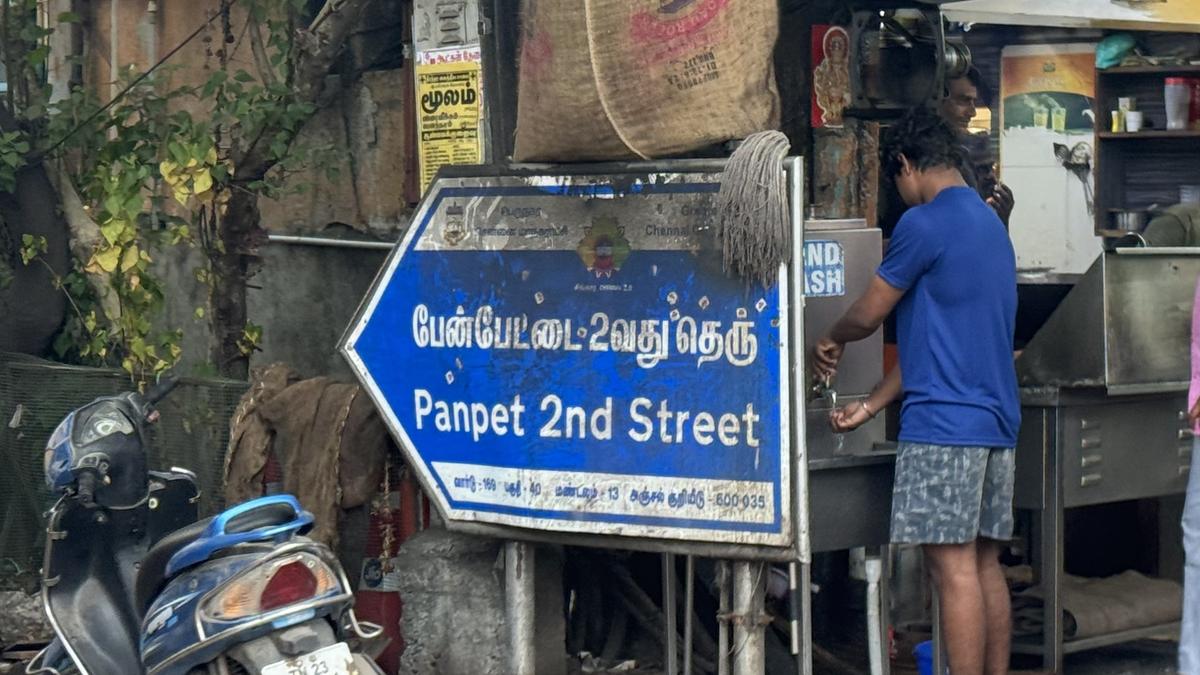While waiting at a traffic light, this signboard caught my attention. Panpet is in Saidapet. The name is mutilated beyond recognition from its original Fanepet but it serves as a reminder of when Chengalpattu was one of the most important districts of the Madras Presidency.
To the East India Company, while Madras was the administrative capital, neighbouring, or more aptly surrounding, Chengalpattu was important as a source of revenue. Obtaining the rights to the jaghir of Chingleput was one of the key objectives of every early Governor of Madras. The region was full of waterbodies and therefore fertile.

Farming there was seen as the most lucrative activity. Unfortunately, the incessant wars of the 17th Century had rendered much of that area barren, but this could be rectified with some careful management. Approval from Nawab The Company saw its dream come true by the 1750s, though it took until 1788 when the necessary approval from the Nawab of Arcot, the Nizam at Golconda, and the Mughal Emperor in Delhi could be obtained.
The jaghir comprised the districts of Chennai/Madras, Kancheepuram, Vellore, Tiruvallur, and Tiruvannamalai districts. Thereafter with the city of Chennai becoming an administrative entity of its own, Chengalpattu district came to be divided into ten taluks — Karunguzhi, Uthiramerur, Kanchipuram, Manimangalam, Chengalpattu, Tirupporur, Saidapet, Poonamalle, Peddapalayam and Sathiyavedu, and Nayar. Karunguzhi was the district headquarters except for a period of ten years between 1825 and 1835 when Kanchipuram fulfilled that role.
In 1859/60, the British brought down the number of taluks to six, while not changing the overall district size, and reassigned Saidapet as the new district headquarters. The new taluks were Saidapet, Tiruvallur, Kanchipuram, Ponneri, Chengalpattu, and Madhurantakam. This arrangement remained more or less unchanged until 1949/1950 when Saidapet became a part of Madras city and Chengalpattu town became the headquarters of the remaining district.
The collectorate of Chengalpattu was on the southern bank of the Adyar, on the right side as you approached via the Marmalong (now Maraimalai Adigal) Bridge. The supremely ugly Panagal Building stands on the site where there was a beautiful colonial building till the 1990s, full of stained glass and statuary. This is why the connecting thoroughfare to Guindy is even now known as Taluk Office Road.
The district court, now the Saidapet Magistrates Court, a handsome Indo-Saracenic building, happily survives and is still in use. A major step up To be appointed the Collector of Chengalpattu was a major step up in the civil services during Company and Raj rule. It indicated that you were well on your way to becoming Chief Secretary or Member, Revenue Board.
EGR Fane was one such. He appears to have joined the Madras Civil Service in the 1840s, beginning as Head Assistant to the Collector and Magistrate of Madurai. From then on, he was posted at various places and in the early 1860s was the Collector of Chengalpattu.
His principal contribution in today’s terms is the vast tract of casuarina trees that we see on the ECR as we drive towards Mamallapuram. In a letter dated September 13, 1865, he writes as much, adding that the wood was perennially in demand in the city. He also seems to have been interested in Kodukkapuli (Madras thorn) tree cultivation.
Becoming the Collector of Madras a couple of years later, he became a Member of the BOR in 1869. He resigned from service in 1870 and disappears from records thereafter. Interestingly, the area named after him appears as Fanepeteven as late as in 1974.
In the 1990s, it had become Pernpet, and is now Panpet. The Tamil spelling makes it the locality of lice. (V.
Sriram is a writer and historian.) Copy link Email Facebook Twitter Telegram LinkedIn WhatsApp Reddit.



















